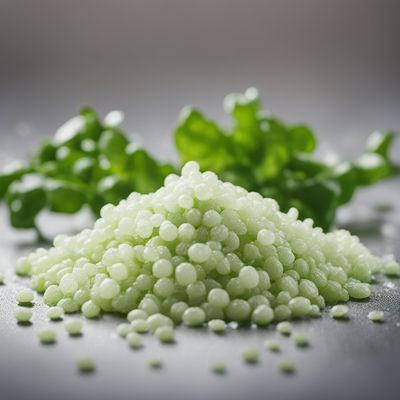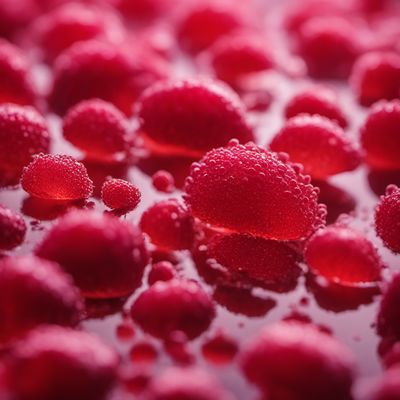
Ingredient
Algae and prokaryotes organisms
The Ocean's Superfoods
Algae and prokaryotes organisms, including seaweed, microalgae, and cyanobacteria, are nutrient-dense aquatic organisms that thrive in marine environments. They come in various shapes, sizes, and colors, and offer a wide range of flavors and textures. From the umami-packed nori sheets to the vibrant spirulina powder, these ocean superfoods are highly versatile and nutritious.
Origins and history
Algae and prokaryotes organisms have been consumed by humans for thousands of years, particularly in Asian cultures. Seaweed has been a staple in Japanese cuisine since ancient times, while spirulina has been harvested by the Aztecs in Mexico for centuries. Today, these organisms are recognized worldwide for their nutritional benefits and culinary versatility.
Nutritional information
Algae and prokaryotes organisms are highly nutritious, packed with essential vitamins, minerals, and antioxidants. They are particularly rich in iodine, iron, calcium, and omega-3 fatty acids. Additionally, they are a great source of plant-based protein and dietary fiber.
Allergens
There are no known allergens associated with algae and prokaryotes organisms, but individuals with iodine allergies or sensitivities should exercise caution when consuming certain types of seaweed.
How to select
When selecting algae and prokaryotes organisms, choose products that are sourced from reputable suppliers and have undergone rigorous quality control. Look for fresh, vibrant colors and avoid any signs of spoilage or contamination. For dried seaweed, ensure that it is properly packaged and free from moisture.
Storage recommendations
To maintain the freshness and quality of algae and prokaryotes organisms, store them in a cool, dry place away from direct sunlight. Dried seaweed should be kept in airtight containers to prevent moisture absorption. Fresh seaweed should be refrigerated and consumed within a few days.
How to produce
Algae and prokaryotes organisms can be cultivated in controlled environments such as seaweed farms or specialized facilities for microalgae and cyanobacteria. However, their large-scale production requires expertise and specific conditions, making it more suitable for commercial operations.
Preparation tips
Algae and prokaryotes organisms can be used in a variety of ways in the kitchen. Seaweed can be used to wrap sushi rolls, added to soups and stews, or used as a garnish for salads and rice dishes. Microalgae and cyanobacteria can be incorporated into smoothies, baked goods, or used as a natural food coloring. Experiment with different types and forms to discover their unique flavors and textures.
Culinary uses
Algae and prokaryotes organisms are widely used in Asian cuisines, particularly in Japanese, Korean, and Chinese dishes. Seaweed is a common ingredient in sushi, miso soup, and seaweed salads. Spirulina and chlorella powder are popular additions to smoothies, energy bars, and health supplements.
Availability
Algae and prokaryotes organisms are commonly available in coastal regions and countries with access to marine environments. They are cultivated and harvested in countries such as Japan, South Korea, China, and the United States.
More ingredients from this category

Other procaryotes organisms
The Hidden World of Prokaryotic Delights

Micro-phyte
The Tiny Nutritional Powerhouse

Green algae
The Ocean's Superfood

Other algae
The Ocean's Green Gems

Brown algae
The Ocean's Nutritional Treasure: Exploring the Wonders of Brown Algae

Red algae
The Vibrant Oceanic Delicacy